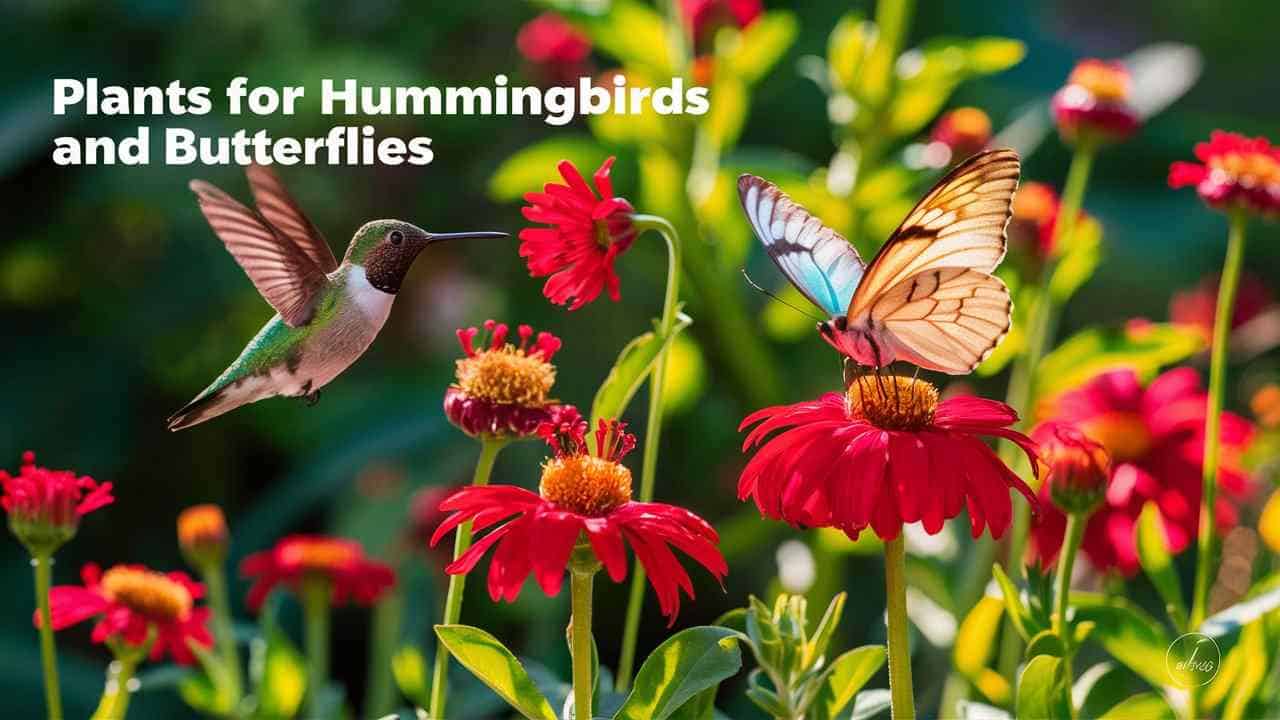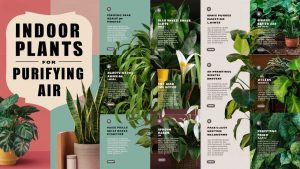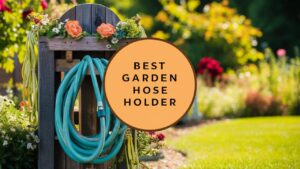Imagine colorful hummingbirds darting from flower to flower, and delicate butterflies fluttering among vibrant blooms. Creating a haven for these enchanting creatures is easier than you think! By selecting the right plants, you can transform your outdoor space into a vibrant ecosystem.
Agastache (Agastache spp.)
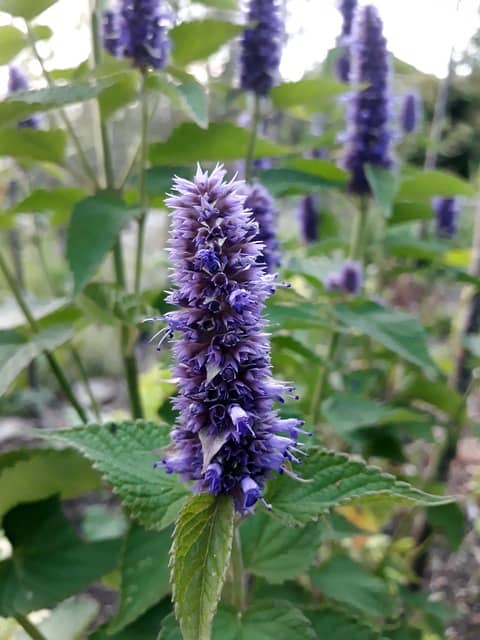
Also known as hummingbird mint or hyssop, agastache is a fragrant, nectar-rich plant that hummingbirds love. It blooms from early summer to fall and comes in a variety of colors including pink, purple, blue, and white. Agastache is a perennial in most regions but may be treated as an annual in areas with very cold winters.
Cardinal Flower (Lobelia cardinalis)
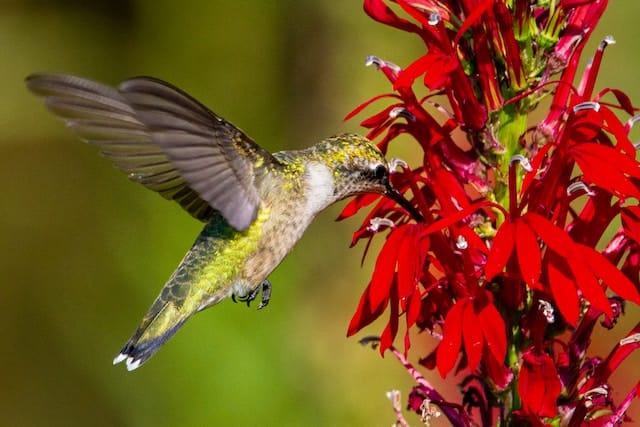
Cardinal flower is another perennial that hummingbirds love. It gets its name from its showy red flowers that are a favorite of cardinals and hummingbirds alike. Cardinal flower blooms from mid-summer to early fall and does best in full sun or partial shade. It can be invasive in some regions so check with your local Cooperative Extension Office before planting it.
Coral Bells (Heuchera sanguinea)

Coral bells are perennials that produce nectar-rich, bell-shaped flowers that attract Hummingbirds, bees, and butterflies alike. They come in a wide range of colors including pink, white, red, and purple and bloom from early summer to mid-fall. Coral bells do best in partial shade but can tolerate full sun if given enough water.
Four O’Clocks (Mirabilis jalapa)

Four o’clocks get their common name from the fact that their flowers open in the late afternoon and close again at dawn. They are very fragrant and produce nectar that is beloved by both hummingbirds and moths. Four o’clocks are annuals but will self-seed if left unchecked making them effectively perennials in many gardens. They come in a wide range of colors including white, yellow, pink, and red and will bloom prolifically from midsummer until frost kills them back.
Fuchsia (Fuchsia spp.)

Fuchsias are showy shrubs that produce drooping flowers that are very popular with hummingbirds. They come in a wide range of colors including pink, purple, red, and white and will bloom from early summer until frost kills them back. Fuchsias need consistent moisture so they do best in gardens with regular irrigation or high rainfall amounts. In regions with hot summers, they appreciate some afternoon shade to prevent wilting.
Lantana (Lantana camara)
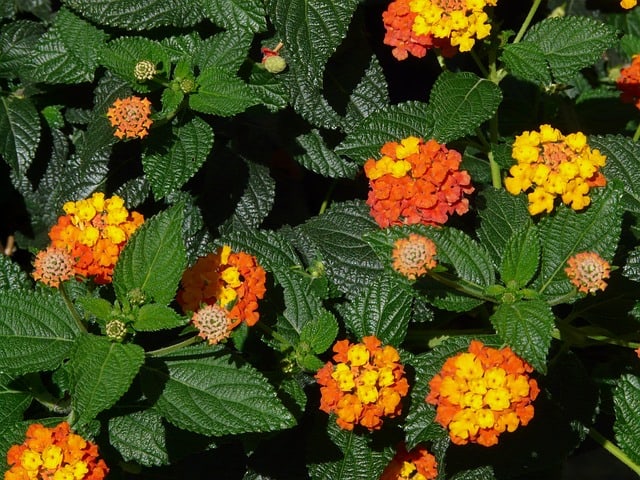
Lantana is a beautiful flowering plant that comes in a wide variety of colors including pink, purple, red, and orange. It’s a perennial plant, which means it will come back year after year with minimal care. Hummingbirds love the nectar from the Lantana flower and will often visit the same plant multiple times a day.
Petunia (Hybrids, P. axillaris x P. integrifolia)
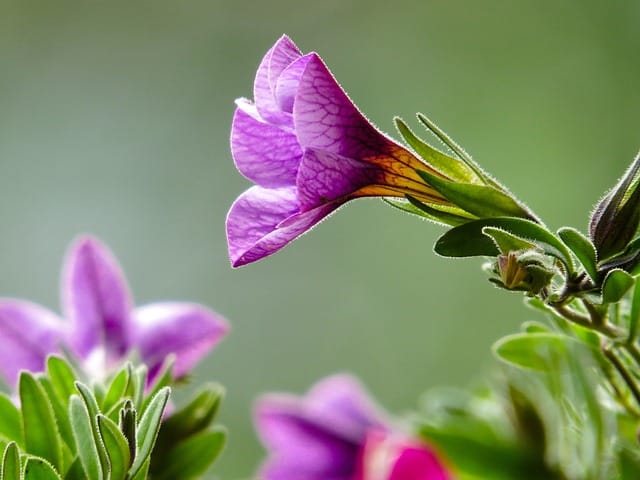
Petunias are another popular choice for attracting hummingbirds to your garden. They come in a wide range of colors and sizes and they’re relatively easy to care for. Petunias are annual plants, so you’ll need to replant them every year, but they’re well worth the effort. The nectar from the Petunia flower is very sweet and irresistible to hummingbirds.
Salvia (Salvia cultivars)
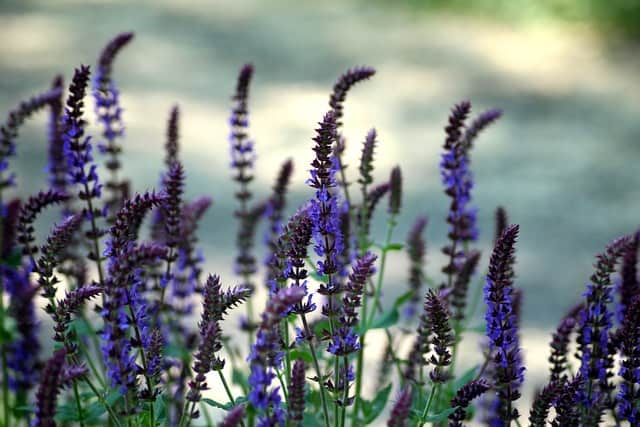
Salvia is a genus of plants that includes both annuals and perennials. They’re easy to grow and come in a wide variety of colors including blue, purple, white, and pink. Salvia flowers are very rich in nectar which makes them a big hit with hummingbirds. In fact, the hummingbird is the primary pollinator for many types of Salvia.
Snapdragon (Antirrhinum majus)
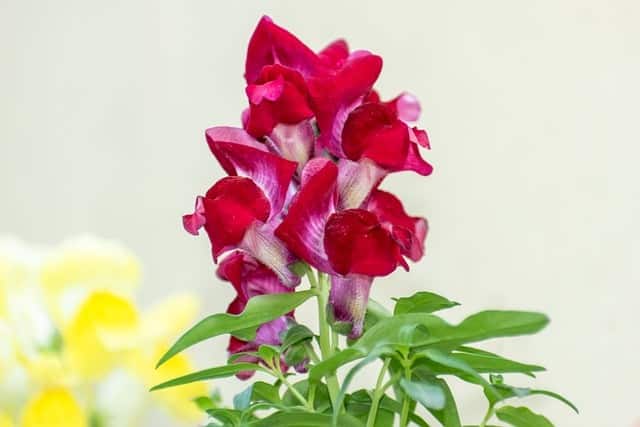
Snapdragons are another great choice for attracting hummingbirds to your garden. They come in a wide variety of colors and they’re relatively easy to care for. Snapdragons are also rich in nectar, which makes them an ideal choice for attracting these tiny creatures. like Lantana, Snapdragons are also perennial plants which means they’ll come back year after year with minimal care.
Weigela (Weigela cultivars)
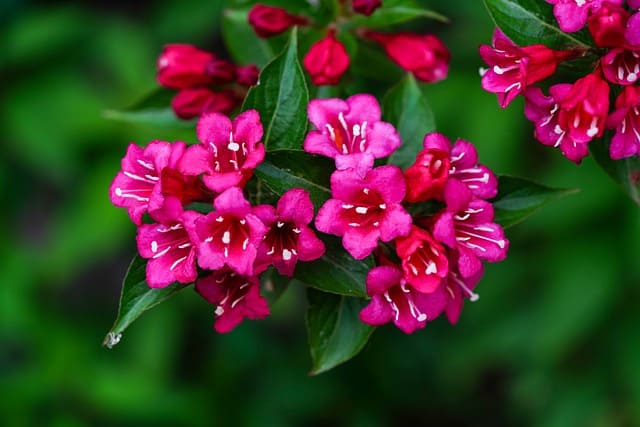
Weigela is a genus of deciduous shrubs that are native to East Asia. They’re easy to grow and come in a wide variety of colors including pink, red, purple, and white. Weigelas are very popular among gardeners because they’re relatively low maintenance and they bloom profusely during the spring and summer months. Hummingbirds love the nectar from Weigela flowers and will often visit the same plant multiple times per day.
Bee Balm
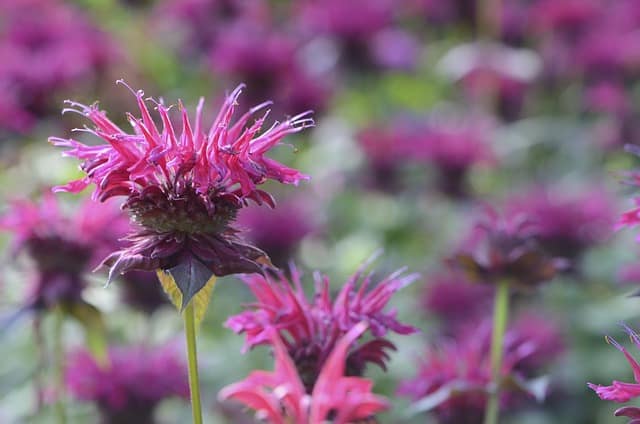
Bee balm, also known as Monarda, is a vibrant and fragrant perennial that is a favorite of hummingbirds. These showy flowers come in a range of colors including red, pink, purple, and white, making them a beautiful addition to any garden. Hummingbirds are particularly attracted to the tubular, nectar-rich flowers of bee balm.
Bee balm thrives in full sun to partial shade and prefers well-drained, moist soil. It grows 2-4 feet tall and spreads readily, so be prepared to divide the plants every few years to maintain vigor. Deadheading spent flowers will encourage more blooms throughout the summer. Bee balm is also deer resistant, making it a great choice for gardens where these pests are a problem.
Zinnia
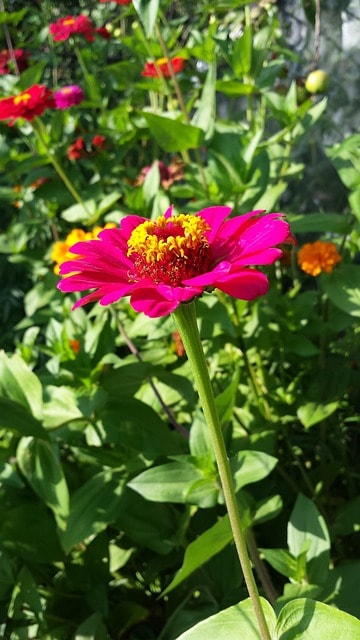
Zinnias are another hummingbird magnet in the garden. These bright, cheerful annuals come in a wide array of colors including red, orange, yellow, pink, and purple. Hummingbirds are drawn to the large, nectar-filled flowers. Zinnias are easy to grow from seed and bloom prolifically all summer long.
Plant zinnias in full sun and well-drained soil. They grow 12-36 inches tall depending on the variety. Deadheading spent blooms will prolong the flowering season. Zinnias are also excellent cut flowers, so you can enjoy their beauty both in the garden and in bouquets.
Bleeding Heart
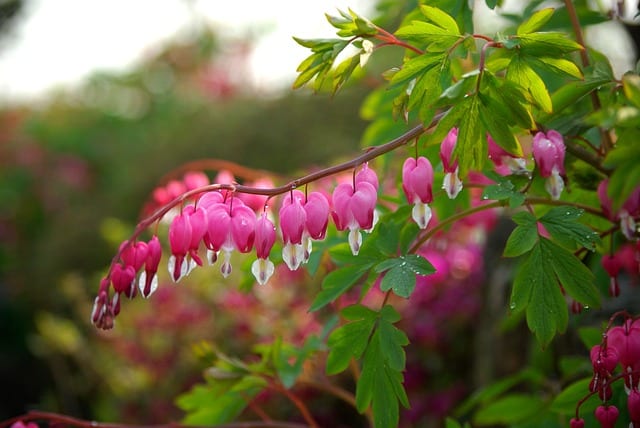
The delicate, heart-shaped flowers of bleeding heart are another favorite of hummingbirds. This shade-loving perennial produces cascading clusters of pink or white blooms in the spring. While the main flowering period is in spring, some varieties may rebloom sporadically throughout the summer.
Bleeding heart prefers partial to full shade and moist, well-drained soil. It grows 1-3 feet tall and spreads slowly over time. After the initial spring bloom, the foliage may go dormant in the heat of summer, only to reemerge in the fall. Bleeding heart is deer resistant and makes a lovely addition to woodland gardens and shady borders.
Butterfly Bush
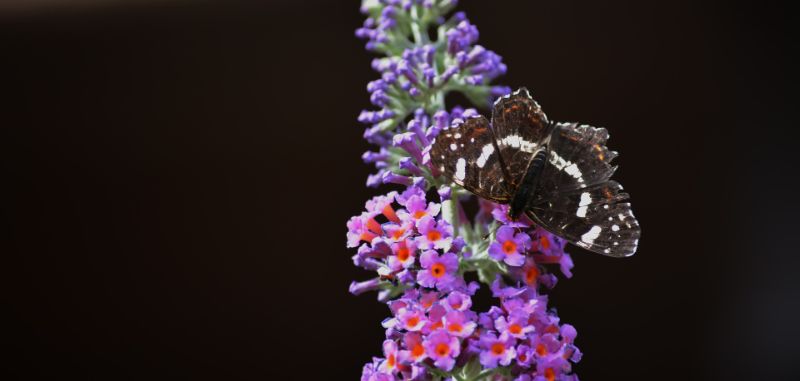
Butterfly bush is a magnet for both butterflies and hummingbirds. These fast-growing shrubs produce large, fragrant flower clusters in shades of purple, pink, white, and yellow that are irresistible to nectar-feeding visitors. Hummingbirds are particularly drawn to the long, tubular flowers.
Butterfly bush thrives in full sun and well-drained soil. It grows 5-10 feet tall and wide, making it a substantial presence in the garden. Deadheading spent blooms will encourage more flowers to form throughout the summer. Be aware that butterfly bush can be considered invasive in some regions, so check local guidelines before planting. With proper care and placement, however, it can be a beautiful and beneficial addition to a hummingbird-friendly garden.
Trumpet Creeper

Trumpet creeper, or Campsis radicans, is a vigorous, climbing vine that hummingbirds find irresistible. Its large, tubular flowers in shades of orange and red provide a rich nectar source that hummingbirds love. The flowers also attract other pollinators like butterflies and bees.
Trumpet creeper is a fast-growing, deciduous vine that can reach up to 40 feet in length. It prefers full sun and well-drained soil, and will readily climb trellises, arbors, or other structures. Be aware that it can be aggressive and may require regular pruning to keep it in check. However, its showy blooms and ability to attract hummingbirds make it a worthwhile addition to many gardens.
Lupine
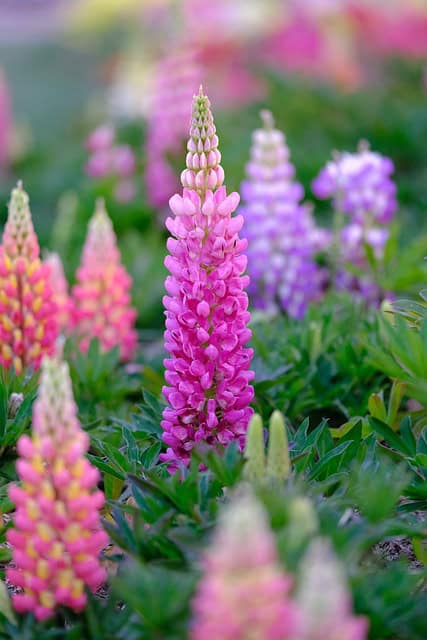
Lupines are another hummingbird-friendly perennial, with their tall spikes of pea-like flowers in a range of vibrant colors. Hummingbirds are drawn to the nectar-rich blooms, which can range from purple and blue to pink, yellow, and white. Lupines also provide valuable pollen for other pollinators.
Lupines prefer full sun and well-drained, slightly acidic soil. They grow 2-4 feet tall and spread slowly over time. Deadheading spent flower spikes will encourage more blooms throughout the season. Lupines are deer resistant and make a stunning addition to cottage gardens, meadows, and borders. Just be aware that they can be toxic to livestock if ingested in large quantities.
Columbine
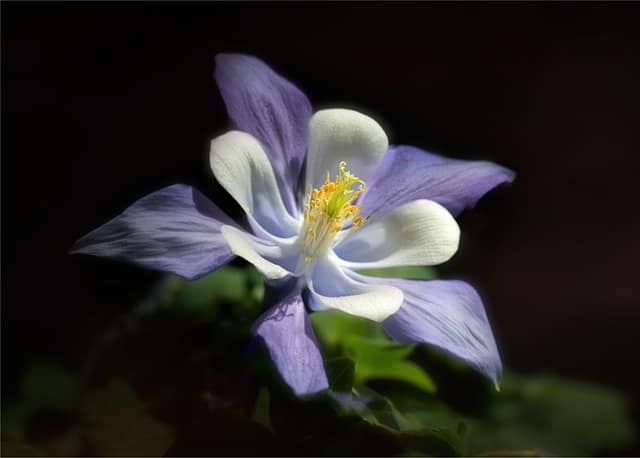
Columbine, or Aquilegia, is a delicate and whimsical perennial that hummingbirds find irresistible. These flowers feature distinctive, spurred petals in a wide range of colors including red, pink, purple, yellow, and white. Hummingbirds are drawn to the nectar-rich blooms, which they can easily access with their long, slender beaks.
Columbine thrives in partial shade to full sun, depending on the variety. It prefers well-drained, moist soil and grows 1-3 feet tall. Deadheading spent flowers will encourage more blooms throughout the spring and early summer. Columbine self-sows readily, so be prepared for new plants to pop up around the garden. This charming perennial makes a lovely addition to woodland gardens, borders, and rock gardens.
Penstemon
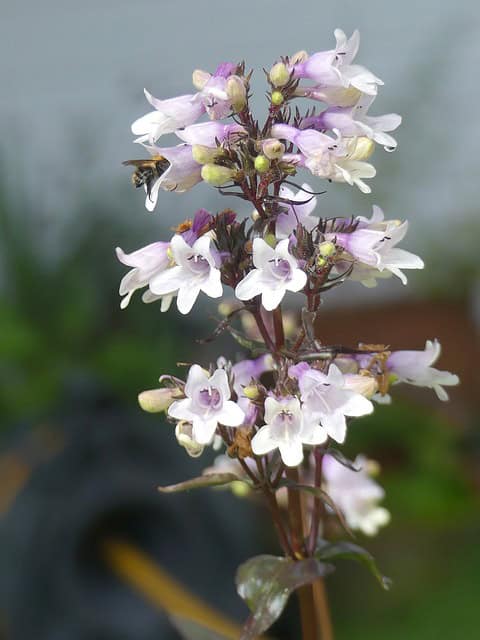
Also known as beardtongue, penstemon is a drought-tolerant perennial that hummingbirds love. These flowers feature tubular blooms in shades of red, pink, purple, and white that are perfectly shaped for a hummingbird’s long, slender beak. Penstemon is native to North America and thrives in full sun and well-drained soil.
Penstemon grows 1-3 feet tall, depending on the variety, and blooms profusely in the late spring and summer. Deadheading spent flowers will prolong the flowering season. This perennial is also deer resistant, making it a great choice for gardens where these pests are a problem. Penstemon self-sows readily, so you may find new plants popping up around the garden.
Flowering Tobacco
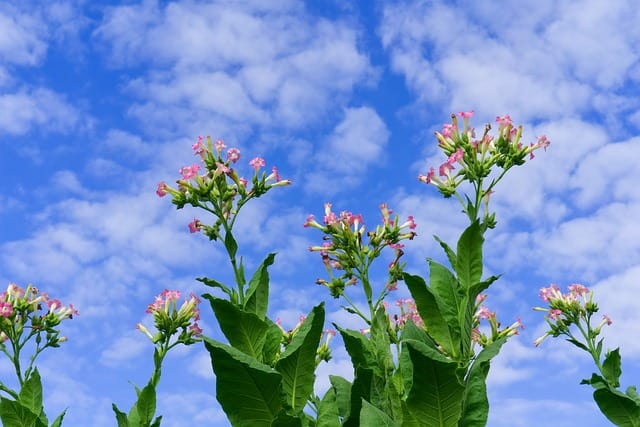
Flowering tobacco, or Nicotiana, is a fragrant annual that hummingbirds find irresistible. These plants produce clusters of tubular, nectar-rich flowers in shades of white, pink, red, and purple that are a magnet for hummingbirds. The flowers also release a sweet fragrance in the evening, attracting hummingbirds and other pollinators.
Flowering tobacco prefers full sun and well-drained soil. It grows 2-4 feet tall, depending on the variety, and blooms prolifically throughout the summer. Deadheading spent flowers will encourage more blooms. Flowering tobacco self-sows readily, so you may find new plants popping up around the garden. This annual makes a beautiful addition to borders, containers, and cutting gardens.
Delphinium
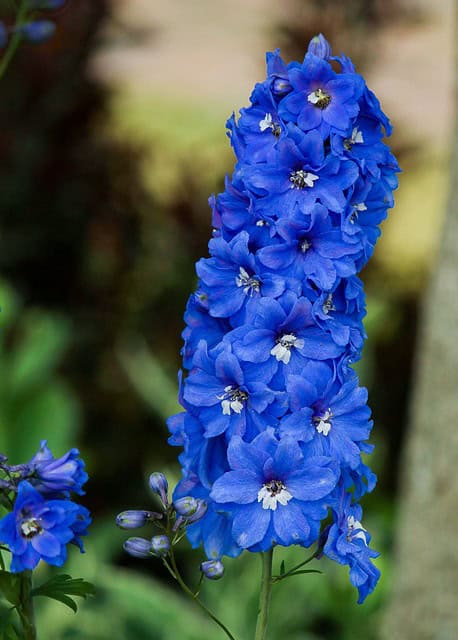
Delphinium, with its tall spikes of vibrant, nectar-rich flowers, is a true hummingbird magnet. These stately perennials come in a range of colors including blue, purple, pink, and white, providing a striking visual contrast in the garden. Hummingbirds are drawn to the tubular blooms, which they can easily access with their long, slender beaks.
Delphiniums thrive in full sun and well-drained, nutrient-rich soil. They grow 3-6 feet tall, depending on the variety, and bloom in the late spring and early summer. Deadheading spent flower spikes will encourage more blooms. Be aware that delphiniums can be toxic if ingested, so they may not be suitable for gardens with small children or pets. However, their beauty and ability to attract hummingbirds make them a worthwhile addition to many gardens.
Foxglove
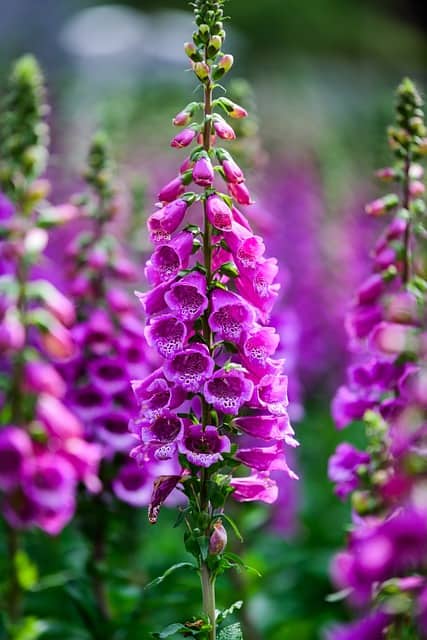
Foxglove, or Digitalis, is another tall, stately perennial that hummingbirds find irresistible. These plants produce tall spikes of tubular, nectar-rich flowers in shades of pink, purple, white, and yellow that hummingbirds love. Foxglove also provides valuable pollen for other pollinators.
Foxglove prefers partial shade and well-drained, moist soil. It grows 2-5 feet tall, depending on the variety, and blooms in the late spring and early summer. Deadheading spent flower spikes will encourage more blooms. Be aware that foxglove can be toxic if ingested, so it may not be suitable for gardens with small children or pets. However, its beauty and ability to attract hummingbirds make it a worthwhile addition to many gardens.
Cuphea
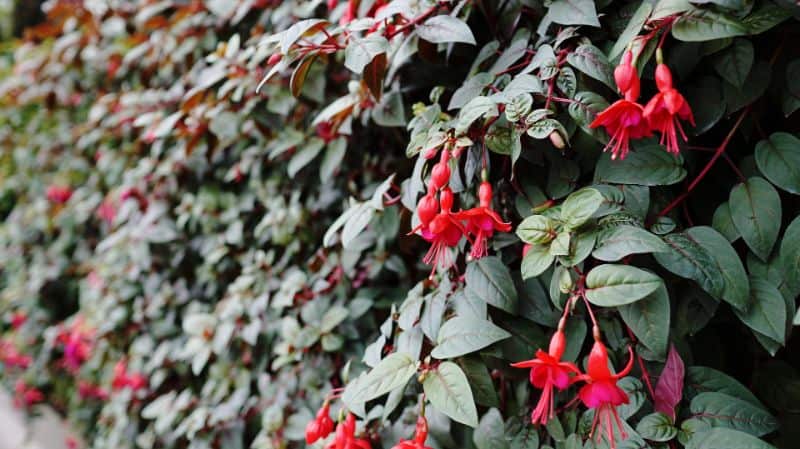
Cuphea, also known as cigar plant or Mexican heather, is a vibrant and unique annual that hummingbirds find irresistible. These plants produce clusters of tubular, nectar-rich flowers in shades of red, orange, pink, and purple that are perfectly shaped for a hummingbird’s long, slender beak. Cuphea also attracts butterflies and other pollinators.
Cuphea thrives in full sun and well-drained soil. It grows 12-24 inches tall and spreads readily, making it a great choice for containers, hanging baskets, and garden beds. Cuphea blooms prolifically from spring through fall, providing a constant source of nectar for hummingbirds. Deadheading spent flowers will encourage more blooms. This annual is also drought-tolerant, making it a low-maintenance addition to any hummingbird-friendly garden.
Catmint
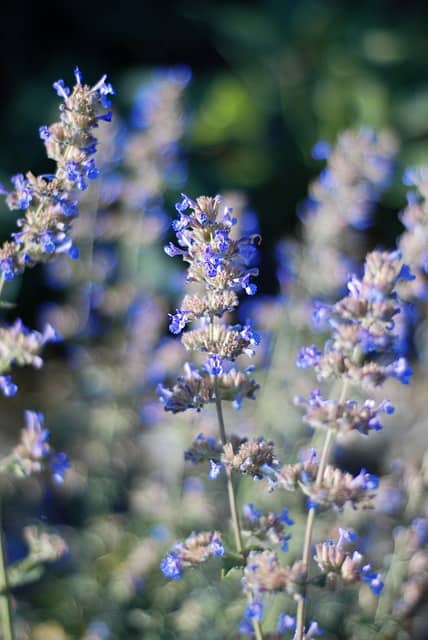
Catmint, or Nepeta, is a fragrant and drought-tolerant perennial that hummingbirds find irresistible. These plants produce clusters of small, tubular flowers in shades of blue, purple, and white that are rich in nectar. Hummingbirds are drawn to the blooms, which they can easily access with their long, slender beaks.
Catmint prefers full sun to partial shade and well-drained soil. It grows 12-24 inches tall and spreads readily, making it a great choice for ground covers, borders, and containers. Catmint blooms from late spring through fall, providing a long season of nectar for hummingbirds. Deadheading spent flowers will encourage more blooms. This perennial is also deer resistant and low-maintenance, making it a valuable addition to any hummingbird-friendly garden.
Phlox
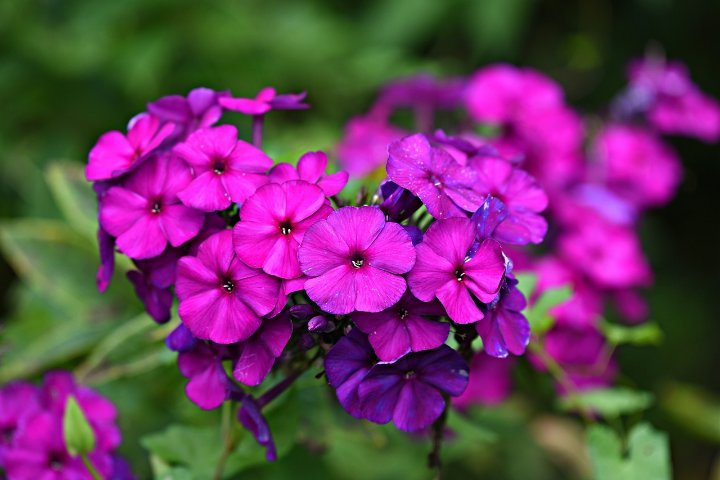
Phlox is a versatile and hummingbird-friendly perennial that comes in a range of varieties, from low-growing ground covers to tall, upright plants. These flowers produce clusters of tubular, nectar-rich blooms in shades of pink, purple, white, and red that hummingbirds find irresistible.
Phlox thrives in full sun to partial shade and well-drained soil. It grows 6 inches to 3 feet tall, depending on the variety, and blooms from late spring through summer. Deadheading spent flowers will encourage more blooms. Phlox is also deer resistant and low-maintenance, making it a great choice for a variety of garden settings. Whether you choose a ground cover or upright variety, phlox is sure to attract hummingbirds to your garden.
Morning Glory

Morning glory is a fast-growing, climbing vine that hummingbirds find irresistible. These plants produce large, trumpet-shaped flowers in a range of vibrant colors including blue, purple, pink, and red. Hummingbirds are drawn to the nectar-rich blooms, which they can easily access with their long, slender beaks.
Morning glory thrives in full sun and well-drained soil. It grows quickly, reaching up to 15 feet in length, and will readily climb trellises, arbors, or other structures. Morning glory blooms from late spring through fall, providing a long season of nectar for hummingbirds. Be aware that it can be considered invasive in some regions, so it’s important to monitor its growth and contain it if necessary.
Canna Lily
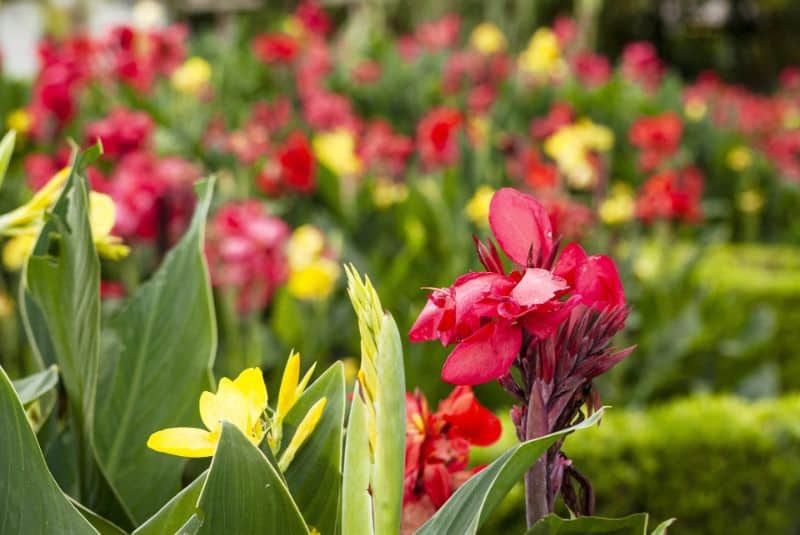
Canna lilies are a bold and tropical-looking perennial that hummingbirds adore. These plants produce large, showy flowers in a range of colors including red, orange, yellow, and pink. The tubular blooms are rich in nectar, making them a prime target for hummingbirds.
Canna lilies prefer full sun and moist, well-drained soil. They grow 3-6 feet tall, depending on the variety, and have large, lush foliage that provides a striking backdrop for the flowers. Canna lilies bloom from summer through fall, providing a long season of nectar for hummingbirds. They are also deer resistant, making them a great choice for gardens where these pests are a problem.
Be aware that canna lilies are tropical plants and may not be hardy in all climates. In colder regions, the rhizomes will need to be dug up and stored over the winter. However, their ability to attract hummingbirds and their bold, tropical aesthetic make them a worthwhile addition to many gardens.
Wild Violets
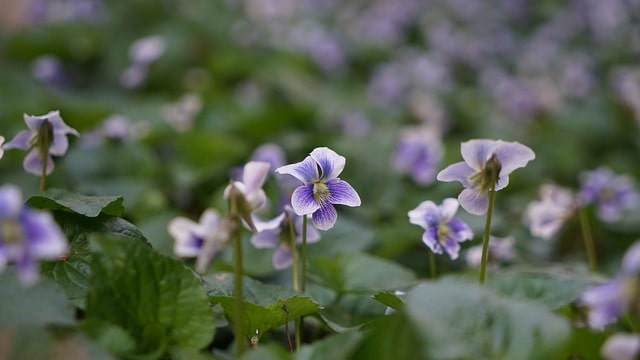
Wild violets (Viola sororia) are one of the earliest bloomers in springtime, making them a valuable addition to any butterfly garden. These small flowers thrives in shady areas and produces nectar that’s beloved by native pollinators like bees, wasps, and butterflies. Wild violets are incredibly easy to care for and require very little maintenance beyond the occasional weeding. Best of all? They’re practically bulletproof and can survive even the most neglectful gardener.
Daffodils
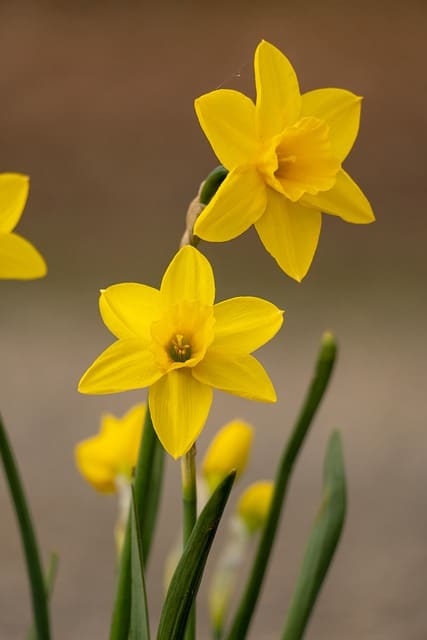
These cheerful flowers are a great way to add some color to your garden, and they’re also one of the best plants for attracting butterflies. Daffodils are especially popular with sulfur and skipper butterflies.
Allium Schubertii
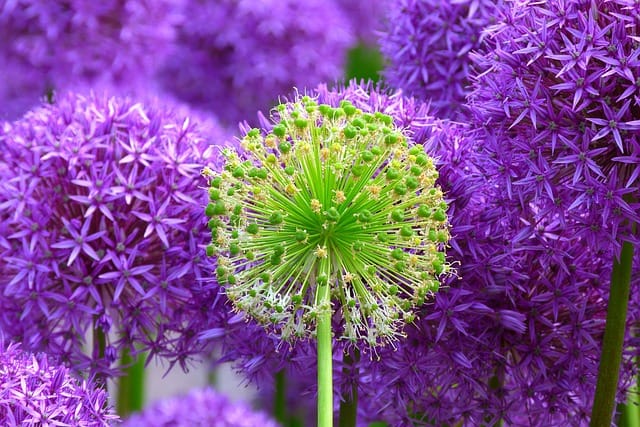
Allium Schubertii is a type of onion that produces clusters of showy purple flowers. These flowers are very fragrant, and they’re a favorite of both bees and butterflies. In addition to being attractive to pollinators, Allium Schubertii is also deer resistant, so you don’t have to worry about your local deer population snacking on your flowers.
Candytuft
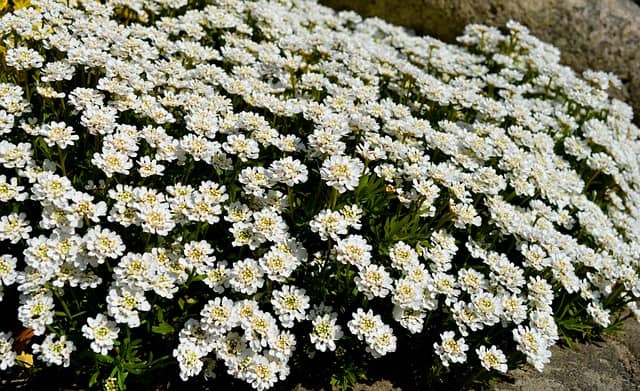
Candytuft is a low-growing plant that produces masses of white or pink flowers. This plant is very popular with bees and Butterflies, and it’s also relatively drought tolerant, so it’s a great choice for gardens in dry climates.
Chocolate Drop Sedum
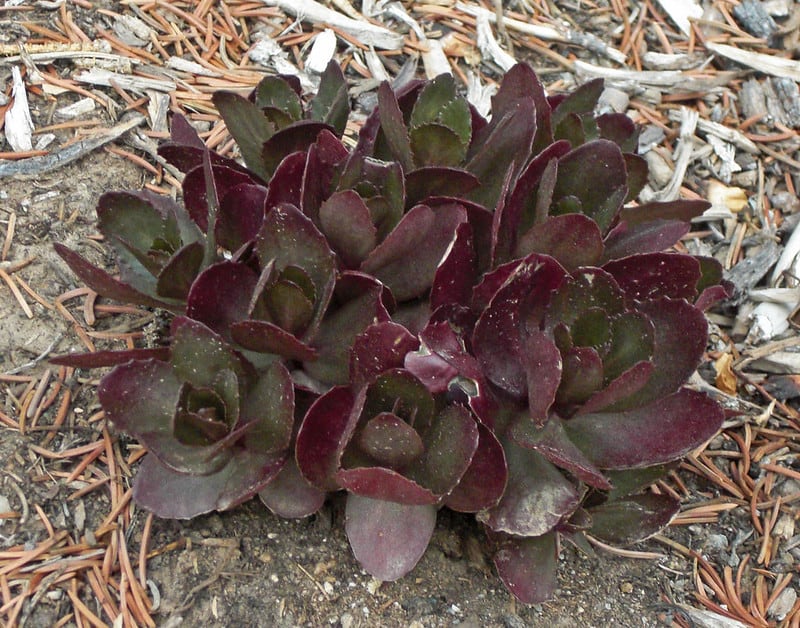
Chocolate Drop Sedum gets its name from its chocolate-colored foliage, which provides a striking contrast to its small white flowers. This plant is very easy to care for, and it’s a great choice if you’re looking for a ground cover that attracts butterflies.Skippers are especially fond of Chocolate Drop Sedum.
Korean Spice Viburnum
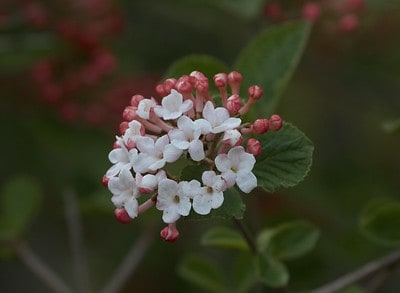
Korean Spice Viburnum is an ornamental shrub that produces small white flowers clustered together in large clusters. The flowers have a spicy fragrance, hence the name “Korean Spice.” This plant is very attractive to bees and Butterflies, making it a great addition to any garden.
Lavender
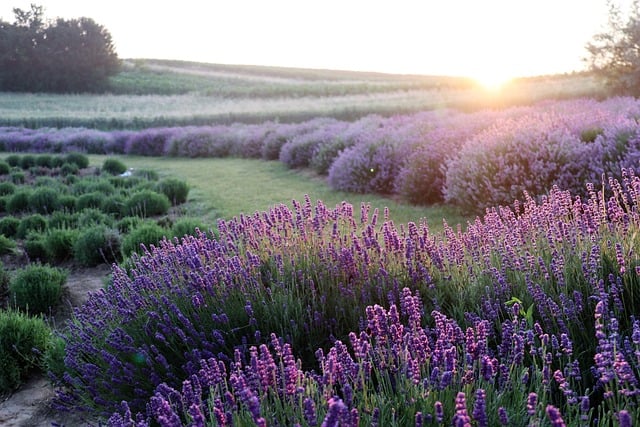
Lavender is a classic choice for any butterfly garden. This fragrant, drought-tolerant herb produces clusters of small, nectar-rich flowers that butterflies find irresistible. The most popular varieties for attracting butterflies include English lavender (Lavandula angustifolia) and Spanish lavender (Lavandula stoechas).
Butterflies like the Painted Lady, Cabbage White, and Clouded Sulphur are particularly drawn to lavender’s sweet scent and abundant nectar. The plant’s silvery-green foliage also provides shelter and a place for butterflies to bask in the sun.
Lavender thrives in full sun and well-drained soil. It’s hardy in USDA Hardiness Zones 5-9, making it a versatile choice for many gardeners. Be sure to plant lavender in groups or drifts to create a more impactful display that will attract more butterflies.
Aster
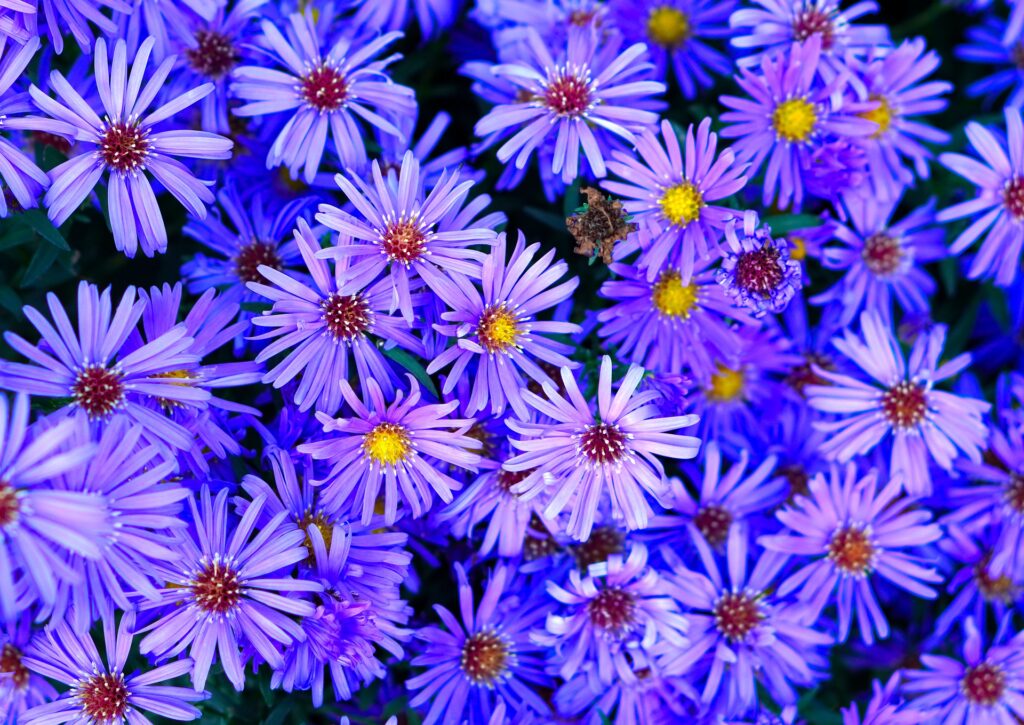
Asters are another fantastic choice for a butterfly garden. These late-summer and fall-blooming flowers come in a wide range of colors, including purple, pink, white, and blue, and their daisy-like petals are magnets for butterflies.
Butterflies like the Monarch, Red Admiral, and American Lady are particularly drawn to asters. The plants’ nectar-rich blooms provide an important food source for these pollinators as they prepare for migration or the winter months.
Asters prefer full sun and well-drained soil. They are hardy in USDA Hardiness Zones 4-8, making them a great option for gardeners in cooler climates. When planting asters, consider grouping them together to create a more substantial display that will be more visible to passing butterflies.
Heliotrope
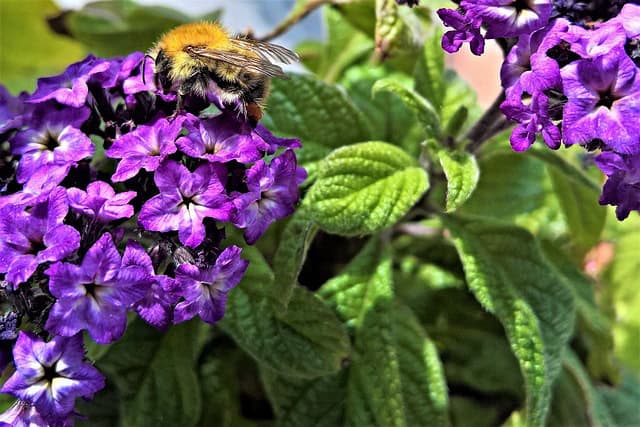
Another wonderful plant that can attract a variety of butterflies to your garden is heliotrope. This fragrant flowering plant comes in shades of purple, blue, and white, and its clusters of small, delicate blooms make it a magnet for many butterfly species.
Heliotrope’s sweet vanilla-like scent is irresistible to butterflies like the Eastern Tiger Swallowtail, Painted Lady, and Red Admiral. The nectar-rich flowers provide an abundant food source, while the plant’s broad leaves offer shelter and a place for butterflies to bask in the sun.
Heliotrope is a tender perennial that thrives in full sun and well-drained soil. It can be grown as an annual in cooler climates, or as a perennial in USDA Hardiness Zones 8-11. Deadheading spent flowers will encourage more blooms throughout the growing season.
Oregano
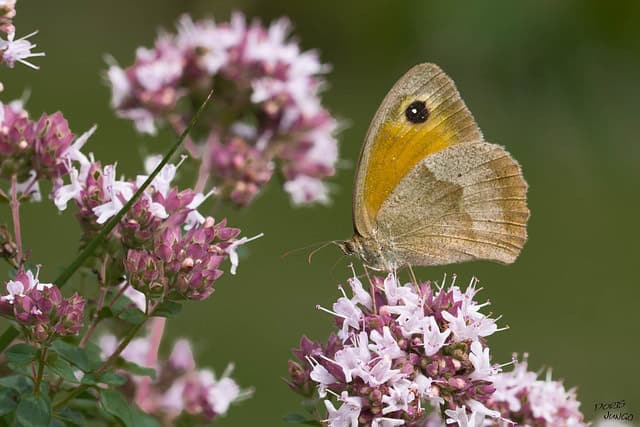
In addition to the previously mentioned plants, oregano is another excellent choice for attracting butterflies to your garden. This aromatic herb not only adds flavor to your cooking, but its clusters of small, nectar-rich flowers are a favorite of many butterfly species.
Butterflies like the Eastern Tiger Swallowtail, Painted Lady, and Monarch are particularly drawn to oregano’s blooms. The plant’s strong, pungent scent helps it stand out and attract these pollinators from a distance. Oregano’s broad, green leaves also provide shelter and a place for butterflies to rest.
Oregano is a hardy perennial that thrives in full sun and well-drained soil. It’s hardy in USDA Hardiness Zones 4-9, making it a versatile option for gardeners across a wide range of climates. Be sure to plant oregano in groups or drifts to create a more substantial display that will be more visible to passing butterflies.
Blazing Star Flowers
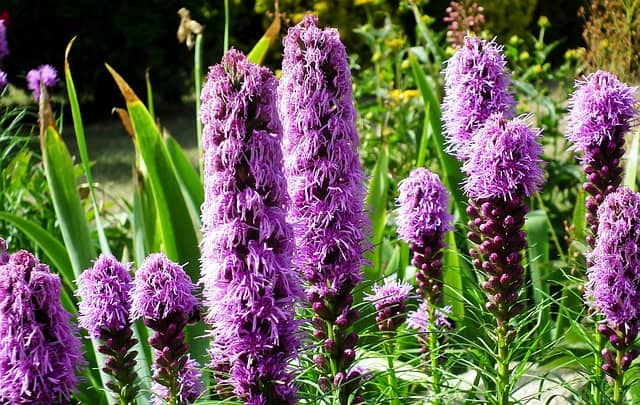
Another captivating plant that can attract a variety of butterflies is the blazing star flower, also known as Liatris. These tall, striking plants produce vibrant, purple-pink flower spikes that bloom from the top down, creating a unique and eye-catching display.
Butterflies like the Monarch, Painted Lady, and Swallowtail are drawn to the abundant nectar in blazing star’s tubular flowers. The plant’s long, slender leaves also provide shelter and a place for butterflies to perch and bask in the sun.
Blazing star flowers prefer full sun and well-drained soil. They are hardy in USDA Hardiness Zones 3-9, making them a versatile choice for many gardeners. When planting blazing stars, consider grouping them together to create a more substantial display that will be more visible to passing butterflies.
Marigolds
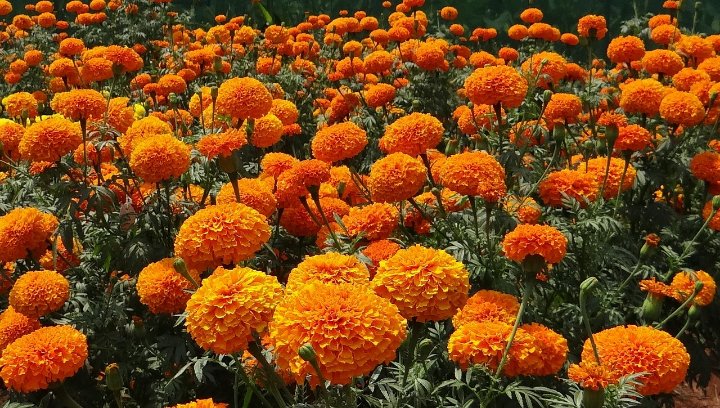
Marigolds are another excellent choice for attracting butterflies to your garden. These cheerful, fragrant flowers come in a range of vibrant colors, including yellow, orange, and red, and their pollen-rich blooms are a favorite of many butterfly species.
Butterflies like the Sulphur, Painted Lady, and Monarch are particularly drawn to marigolds. The plants’ strong, pungent scent helps them stand out and attract these pollinators from a distance. Marigolds’ finely-textured foliage also provides shelter and a place for butterflies to rest.
Marigolds are easy to grow and thrive in full sun and well-drained soil. They are hardy in USDA Hardiness Zones 2-11, making them a versatile choice for gardeners across a wide range of climates.
Black-Eyed Susans
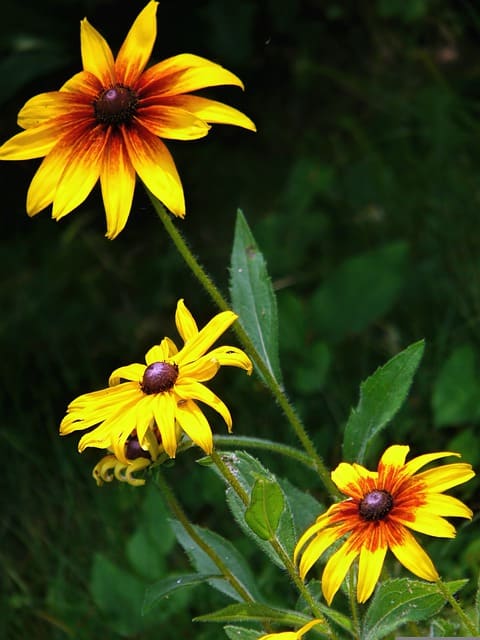
Black-Eyed Susans are a classic choice for attracting butterflies to your garden. These cheerful, daisy-like flowers bloom in shades of yellow and gold, creating a vibrant display that is sure to catch the eye of passing butterflies.
Butterflies like the Painted Lady, Sulphur, and Skipper are particularly drawn to the abundant nectar in Black-Eyed Susans’ flowers. The plants’ tall, sturdy stems also provide a perch for butterflies to rest and bask in the sun.
Black-Eyed Susans prefer full sun and well-drained soil. They are hardy in USDA Hardiness Zones 3-9, making them a versatile choice for many gardeners. When planting Black-Eyed Susans, consider grouping them together in drifts or borders to create a more be more visible to passing butterflies.
Fennel
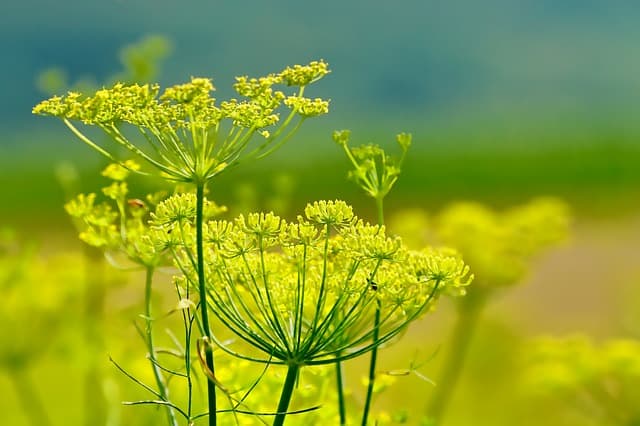
In addition to the previously mentioned plants, fennel is another excellent choice for attracting butterflies to your garden. This aromatic, feathery-leaved herb not only adds flavor to your cooking, but its clusters of small, yellow flowers are a favorite of many butterfly species.
Fennel is a host plant for the Black Swallowtail butterfly, providing food for its caterpillars. But the plant’s nectar-rich blooms also attract a variety of other butterflies, including the Painted Lady, Monarch, and Sulphur.
Fennel thrives in full sun and well-drained soil. It’s hardy in USDA Hardiness Zones 4-10, making it a versatile option for gardeners across a wide range of climates. When planting fennel, be sure to give it plenty of space, as it can grow quite large and spread readily.
Salvia
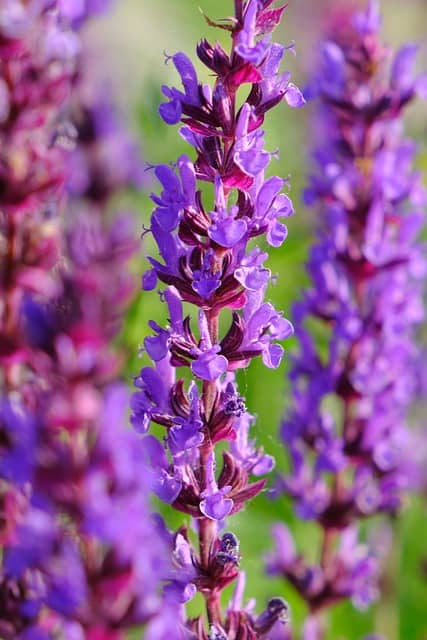
Another captivating plant that can attract a diverse array of butterflies is salvia, also known as sage. These vibrant, nectar-rich flowers come in a range of colors, including red, purple, blue, and white, and their tubular blooms are a favorite of many butterfly species.
Butterflies like the Hummingbird Moth, Painted Lady, and Swallowtail are drawn to salvia’s abundant nectar. The plant’s aromatic foliage also provides shelter and a place for butterflies to bask in the sun.
Salvia thrives in full sun and well-drained soil. It’s hardy in USDA Hardiness Zones 5-10, making it a versatile choice for many gardeners. When planting salvia, consider grouping it with other nectar-rich flowers like lantana, verbena, and zinnia to create a lush, butterfly-friendly oasis.
Pentas
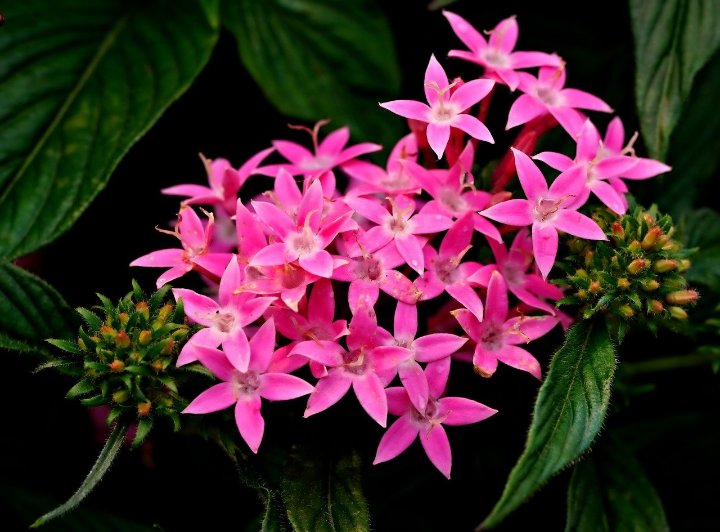
Pentas are a must-have plant for any butterfly garden. These showy, star-shaped flowers come in a range of vibrant colors, including red, pink, purple, and white, and their clusters of nectar-rich blooms are a magnet for a variety of butterfly species.
Butterflies like the Swallowtail, Painted Lady, and Monarch are particularly drawn to pentas’ abundant nectar. The plant’s broad, green leaves also provide shelter and a place for butterflies to rest.
Pentas are tender perennials that thrive in full sun and well-drained soil. They can be grown as annuals in cooler climates, or as perennials in USDA Hardiness Zones 9-11. When planting pentas, consider grouping them together in clusters or borders to create a more impactful display that will be more visible to passing butterflies.
Sunflowers
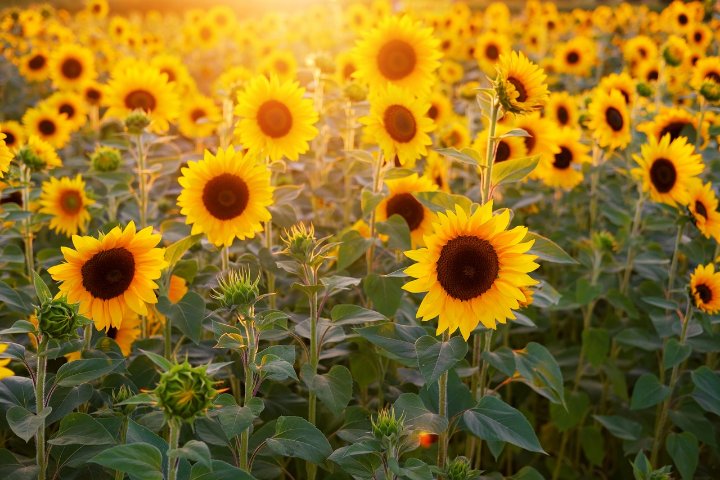
No butterfly garden is complete without the addition of sunflowers. These cheerful, iconic blooms not only provide a stunning visual display, but their pollen-rich flowers are a magnet for a wide variety of butterfly species.
Butterflies like the Painted Lady, Sulphur, and Skipper are particularly drawn to sunflowers’ abundant nectar and pollen. The plants’ tall, sturdy stems also provide a perch for butterflies to rest and bask in the sun.
Sunflowers thrive in full sun and well-drained soil. They are hardy in USDA Hardiness Zones 2-11, making them a versatile choice for gardeners across a wide range of climates. When planting sunflowers, consider choosing a variety with a longer bloom time, such as the ‘Sunspot’ or ‘Sunbright’ cultivars, to extend the butterfly-attracting season.
Phlox

Phlox is another excellent choice for attracting butterflies to your garden. These fragrant, nectar-rich flowers come in a range of colors, including pink, purple, white, and red, and their clusters of blooms are a favorite of many butterfly species.
Butterflies like the Swallowtail, Painted Lady, and Skipper are particularly drawn to phlox’s abundant nectar. The plant’s broad, green foliage also provides shelter and a place for butterflies to rest.
Phlox thrives in full sun to partial shade and well-drained soil. It’s hardy in USDA Hardiness Zones 3-8, making it a versatile choice for many gardeners. When planting phlox, consider grouping it with other nectar-rich flowers like lantana, zinnia, and verbena to create a lush, butterfly-friendly oasis.
Daylily
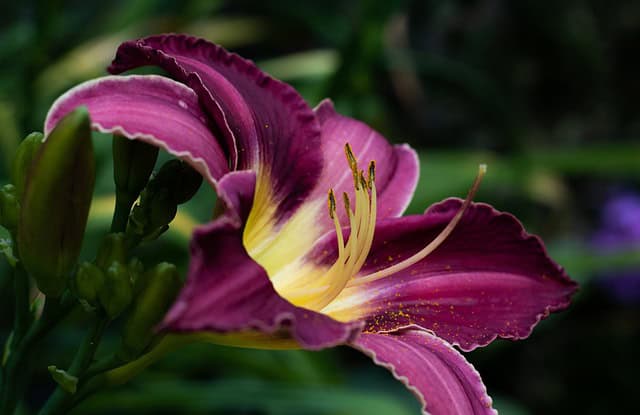
Another excellent choice for attracting butterflies to your garden is the daylily. These vibrant, trumpet-shaped flowers come in a wide range of colors, including yellow, orange, red, and pink, and their nectar-rich blooms are a favorite of many butterfly species.
Butterflies like the Swallowtail, Painted Lady, and Skipper are particularly drawn to daylilies’ abundant nectar. The plant’s lush, green foliage also provides shelter and a place for butterflies to rest.
Daylilies thrive in full sun to partial shade and well-drained soil. They are hardy in USDA Hardiness Zones 3-9, making them a versatile choice for gardeners across a wide range of climates. When planting daylilies, consider grouping them together in drifts or borders to create a more impactful display that will be more visible to passing butterflies.
Hollyhocks
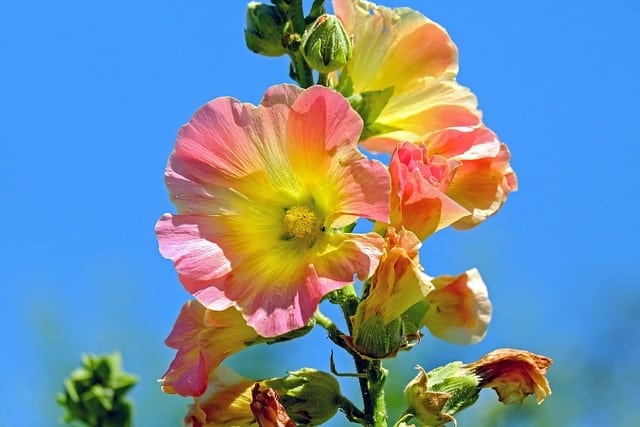
Another captivating plant that can attract a diverse array of butterflies is the hollyhock. These stately, towering flowers come in a range of colors, including red, pink, white, and yellow, and their large, nectar-rich blooms are a favorite of many butterfly species.
Butterflies like the Painted Lady, Swallowtail, and Skipper are drawn to hollyhocks’ abundant nectar. The plant’s broad, green leaves also provide shelter and a place for butterflies to rest.
Hollyhocks thrive in full sun and well-drained soil. They are hardy in USDA Hardiness Zones 3-8, making them a versatile choice for many gardeners. When planting hollyhocks, consider grouping them together in the back of a border or along a fence or wall to create a dramatic, eye-catching display that will be more visible to passing butterflies.
Coneflower
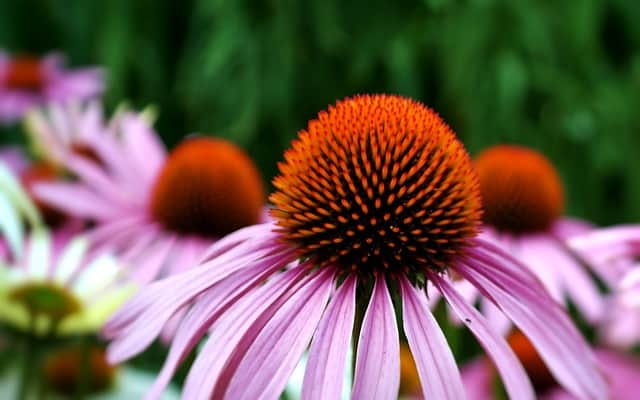
Coneflowers are a must-have plant for any butterfly garden. These vibrant, daisy-like flowers come in a range of colors, including purple, pink, white, and yellow, and their nectar-rich blooms are a favorite of many butterfly species.
Butterflies like the Swallowtail, Painted Lady, and Skipper are particularly drawn to coneflowers’ abundant nectar. The plant’s sturdy, upright stems also provide a perch for butterflies to rest and bask in the sun.
Coneflowers thrive in full sun and well-drained soil. They are hardy in USDA Hardiness Zones 3-9, making them a versatile choice for gardeners across a wide range of climates. When planting coneflowers, consider grouping them together in drifts or borders to create a more impactful display that will be more visible to passing butterflies.
Floss Flower
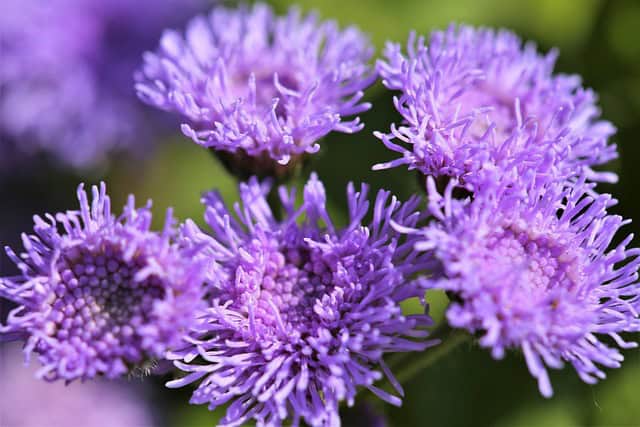
Another excellent choice for attracting butterflies to your garden is the floss flower, also known as ageratum. These fluffy, powder-puff-like blooms come in a range of colors, including blue, purple, and white, and their nectar-rich flowers are a favorite of many butterfly species.
Butterflies like the Painted Lady, Sulphur, and Skipper are particularly drawn to the floss flower’s abundant nectar. The plant’s dense, mounding habit also provides shelter and a place for butterflies to rest.
Floss flowers thrive in full sun to partial shade and well-drained soil. They are hardy in USDA Hardiness Zones 8-11, making them a good choice for gardeners in warmer climates. When planting floss flowers, consider grouping them together in borders or containers to create a more cohesive and visually striking display.
Joe-Pye Weed
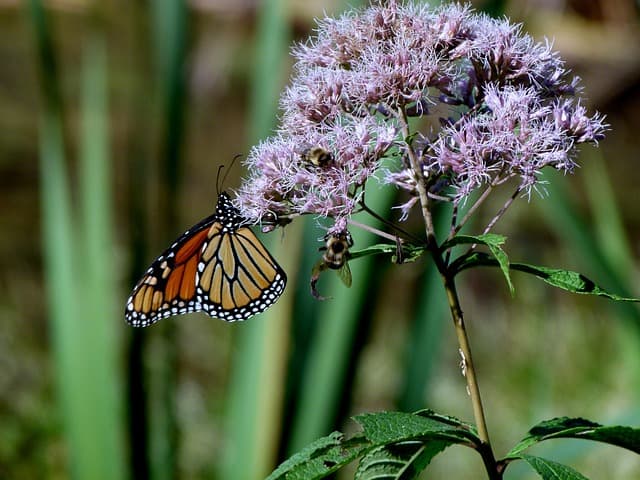
Joe-Pye weed is a must-have plant for any butterfly garden. These towering, mauve-pink flowers are a true showstopper, and their nectar-rich blooms are a favorite of many butterfly species.
Butterflies like the Monarch, Swallowtail, and Painted Lady are particularly drawn to Joe-Pye weed’s abundant nectar. The plant’s large, sturdy stems also provide a perch for butterflies to rest and bask in the sun.
Joe-Pye weed thrives in full sun to partial shade and moist, well-drained soil. It is hardy in USDA Hardiness Zones 3-9, making it a versatile choice for gardeners across a wide range of climates. When planting Joe-Pye weed, consider grouping it with other tall, nectar-rich flowers like sunflowers or coneflowers to create a lush, butterfly-friendly oasis.
Sedum
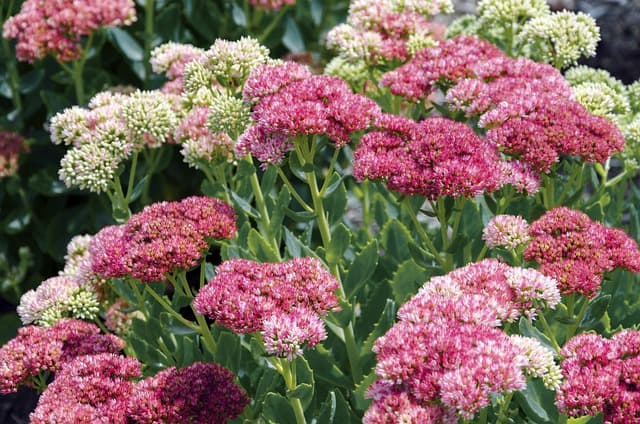
Another excellent choice for attracting butterflies to your garden is sedum, also known as stonecrop. These succulent, low-growing plants come in a range of colors, including pink, purple, and yellow, and their nectar-rich flowers are a favorite of many butterfly species.
Butterflies like the Painted Lady, Sulphur, and Skipper are particularly drawn to sedum’s abundant nectar. The plant’s fleshy, drought-tolerant foliage also provides shelter and a place for butterflies to rest.
Sedum thrives in full sun and well-drained soil. It is hardy in USDA Hardiness Zones 3-9, making it a versatile choice for gardeners across a wide range of climates. When planting sedum, consider grouping it together in drifts or borders to create a more impactful display that will be more visible to passing butterflies.
Agapanthus
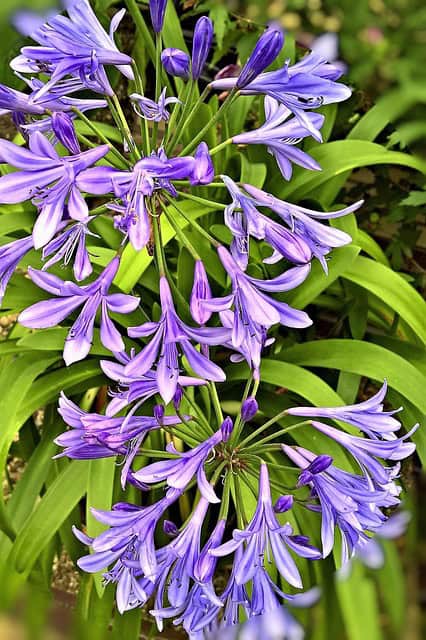
Another captivating plant that can attract a diverse array of butterflies is the agapanthus, also known as the African lily. These stately, globe-shaped flowers come in a range of colors, including blue, purple, and white, and their nectar-rich blooms are a favorite of many butterfly species.
Butterflies like the Swallowtail, Painted Lady, and Skipper are drawn to agapanthus’ abundant nectar. The plant’s tall, sturdy stems also provide a perch for butterflies to rest and bask in the sun.
Agapanthus thrives in full sun and well-drained soil. It is hardy in USDA Hardiness Zones 8-10, making it a good choice for gardeners in warmer climates. When planting agapanthus, consider grouping it together in the back of a border or along a fence or wall to create a dramatic, eye-catching display that will be more visible to passing butterflies.
Goldenrod
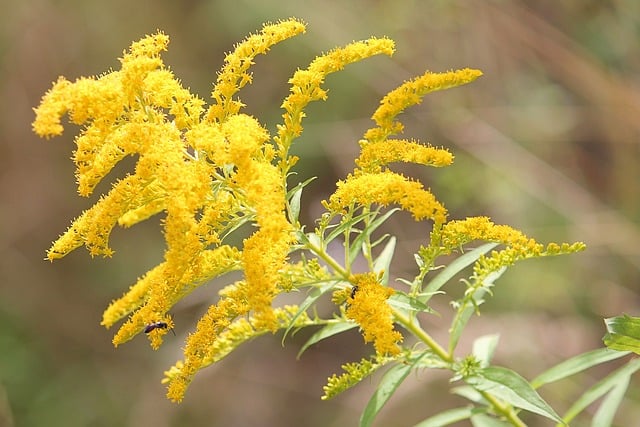
Goldenrod is a must-have plant for any butterfly garden. These vibrant, golden-yellow flowers are a true showstopper, and their nectar-rich blooms are a favorite of many butterfly species.
Butterflies like the Monarch, Swallowtail, and Painted Lady are particularly drawn to goldenrod’s abundant nectar. The plant’s tall, sturdy stems also provide a perch for butterflies to rest and bask in the sun.
Goldenrod thrives in full sun and well-drained soil. It is hardy in USDA Hardiness Zones 3-9, making it a versatile choice for gardeners across a wide range of climates. When planting goldenrod, consider grouping it with other tall, nectar-rich flowers like coneflowers or Joe-Pye weed to create a lush, butterfly-friendly oasis.
By incorporating these additional butterfly-attracting plants into your garden, you’ll be well on your way to creating a vibrant, diverse, and thriving ecosystem that will delight you and your winged visitors for years to come.


